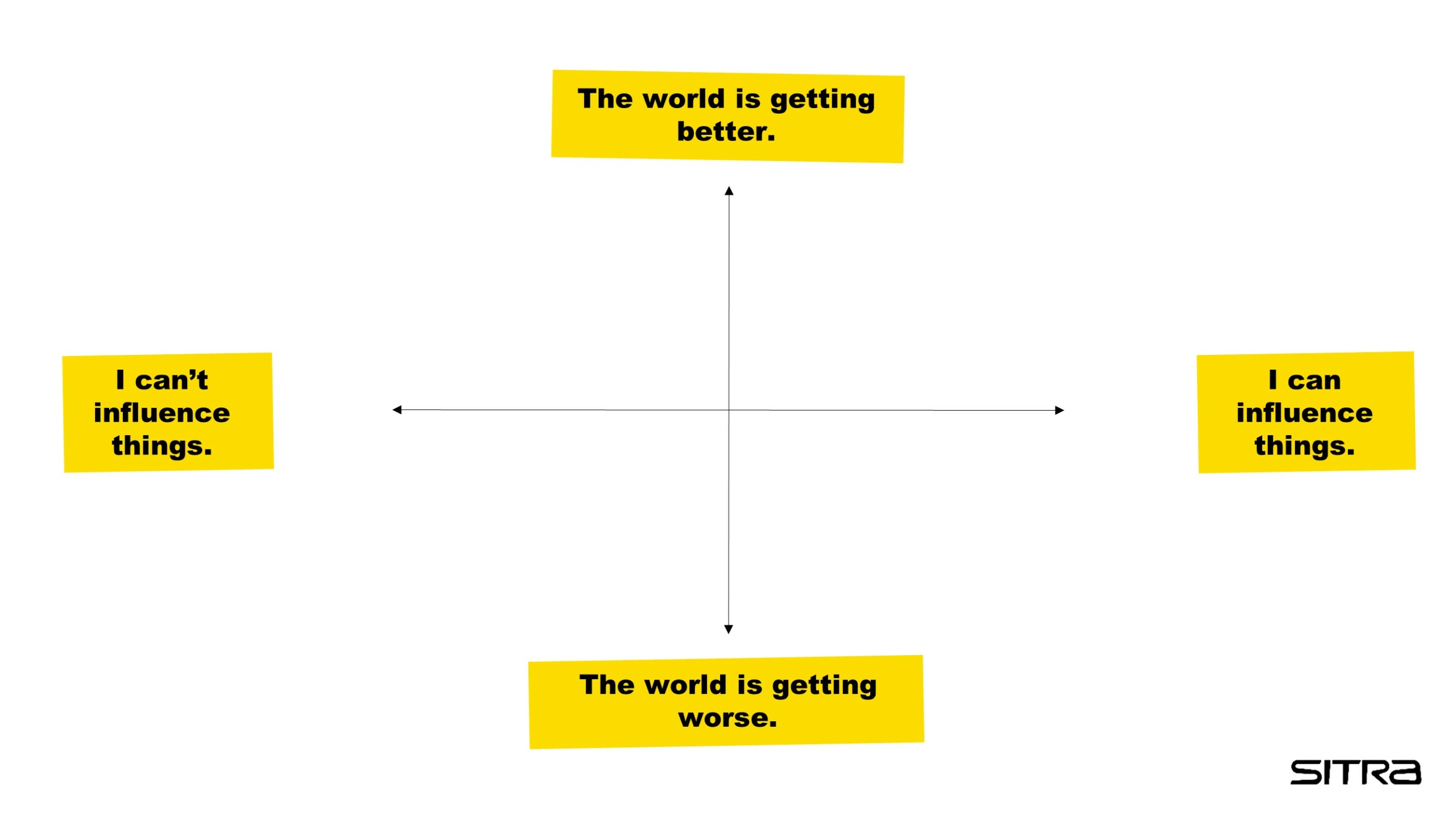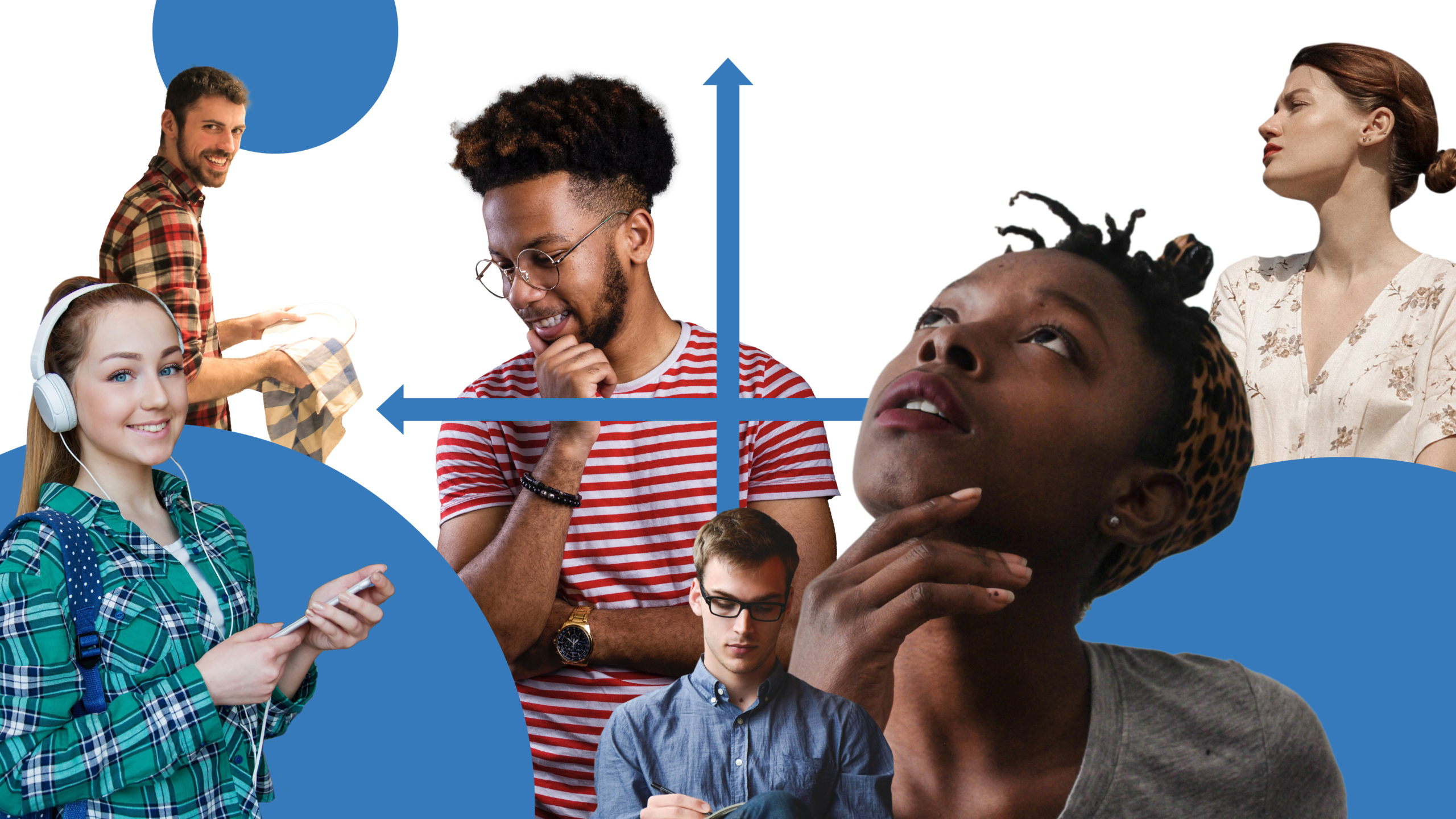In his book The Image of the Future, the futurist Fred Polak describes two dimensions we can use to examine our attitudes about the future. The first concerns the way we see the general direction of development: do we expect the future to be better or worse than the present? The second dimension concerns our ability to influence things: do we feel that we can influence the future?
The futurists Peter Hayward and Stuart Candy have developed a workshop method called the Polak Game that relates to the two dimensions mentioned above. It involves creating a grid of four quadrants based on the two dimensions and asking the participants to move to the quadrant that reflects their views. Due to people’s different personalities, backgrounds and past experiences, they often end up in different quadrants. At the end, you can have a discussion on how each participant ended up in their quadrant and what thoughts they have about each other’s position.
The grid presents an opportunity to recognise how you see the world and your ability to influence it. By illustrating how a person views their own agency and how they think about the future, it often reflects different cultural, religious, economic and political structures as well as individual attributes, such as personality. The optimistic and pessimistic perspective can both either inspire a person to exercise influence or discourage them and make them passive.

Instructions:
In your workshop space, draw two axes and label the ends of the axes to create a two-by-two grid as shown in the illustration. If your workshop is conducted online, you can create the matrix on a suitable collaboration platform such as Miro or Mural.
Ask the participants to think 20 years ahead to the future. Do they feel that things have gotten better or worse? Ask the participants to move to the part of the vertical axis that reflects their view. In an online workshop, you can ask the participants to write their name in the corresponding part of the vertical axis or move a circular graphic element there.
Next, ask the participants to what extent they feel they can influence how things will develop over the next 20 years. Do they believe they have agency, meaning that their actions will have significance in creating a better future? Or do they believe they cannot influence things? Ask the participants to again move in the physical or virtual space to the quadrant that reflects their views.
Ask participants in different parts of the grid why they positioned themselves where they did. You can also ask them if they have any comments or questions to those in other quadrants.
If any quadrant is vacant, you can ask the participants why they did not choose it.
You can wrap up by pointing out that people have different attitudes about the future. Some of us see the future as attractive, others as menacing. On influencing the future, the most important thing is for us to understand how these attitudes influence our present actions, and how they can influence the future.
